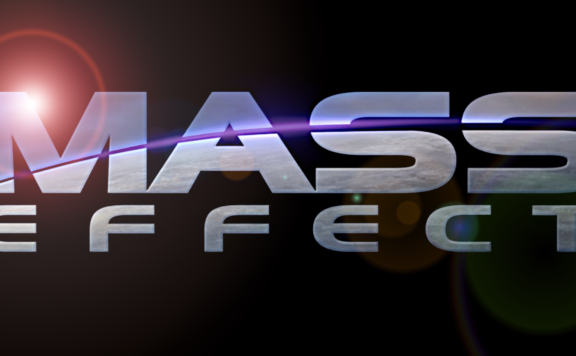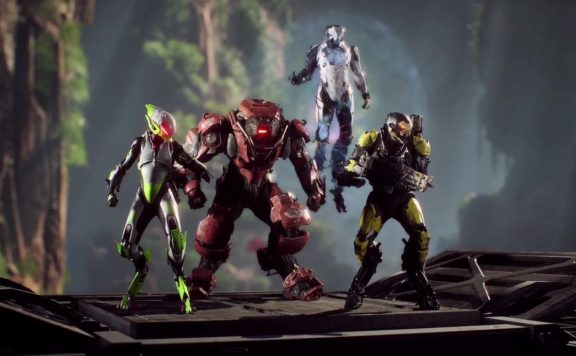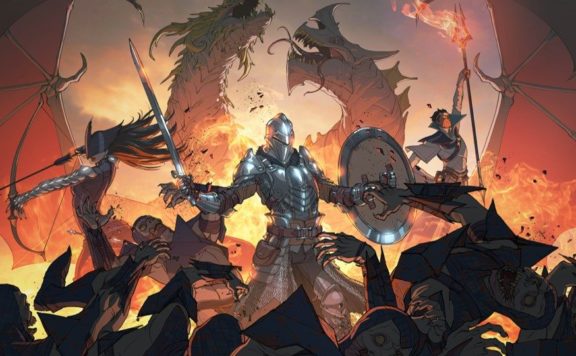Mass Effect: Andromeda’s much awaited launch saw the game release to an assault of criticism on topics ranging from the notable lack of polish to questionable design decisions all around. Even as an enormous fan of the series – I consider the original trilogy to be my favorite games of all time – I have to agree with the criticism. The most accurate description of my time with the game would be that of an enjoyable, but profoundly disappointing experience.
But that’s the thing – it is enjoyable, at least for me. Even with the widely panned animations, dodgy writing, and awful mess of a UI, Mass Effect: Andromeda still manages to be a game you can have fun with, and what’s interesting is how it does it. Normally, you expect a Mass Effect game to deliver excellent writing and terrific character interaction while you play your way through passable but somewhat suspect gameplay mechanics. In Andromeda, the game’s appeal has largely turned out to be quite the opposite.
In this way, Mass Effect Andromeda has brought something new to the table for the franchise to work with in future, hopefully more polished titles. Looking past the mistakes and the problems the game has for now, here are the top features from Andromeda that I’d like to see become a staple of future Mass Effect games to come.
The Combat
Let’s get the most obvious one out of the way first. Mass Effect: Andromeda has some pretty fantastic combat, and it’s been almost universally praised as a step forward for the series.
The original Mass Effect trilogy could always have been described as having simply passable combat; it was never what you’d really consider the selling point of the series. For the most part, your character was bound to the safety of cover if you wanted to survive – something Andromeda has taken a major step away from. While the cover system is very much still a part of the game, Andromeda adds onto it with an array of mobility skills, including dashes and the ability to fly into the air and hover with a baseline jet-pack.
The new enemy AI supports this as well. Now in the grand scheme of gaming in general, Andromeda’s AI wouldn’t really be anything to write home about. But in the context of a series, small, basic improvements like enemies flanking you and forcing you out of your position go a long ways towards making the game more fun. This is particularly true on the higher difficulty settings, where BioWare has finally learned that there’s more to increasing difficulty than simply giving a target more shields.

There are only two points I’d really complain about with Andromeda’s combat. First, cover being automatically managed by proximity doesn’t feel as satisfying as having a dedicated key to control entering and exiting it. It’s not a problem, per se, but it doesn’t work quite as well as it did in the past and it transparently feels like a concession we’re making to limit the number of keybinds needed for controllers. Second, no longer being able to control squad-mates’ ability usage is total nonsense, particularly given that Andromeda places a larger emphasis on ability combos.
Overall though, Mass Effect Andromeda’s combat updates result in a much more active, mobile, hectic, and subsequently more engaging combat experience that makes the game’s combat segments feel like a huge step forward from what we’ve seen in the rest of the series. And if you aren’t getting enough right off the bat, the game’s extensive customization systems allow you to fine tune exactly how much you’re getting of what.
The Character Building
One of the big avenues for this is the way you level up and specialize your character, which I would characterize as hands down the best in the entire franchise without hesitation.
The original Mass Effect trilogy followed an overall trend away from the game’s RPG roots, with the player seeing less control over their ability toolkit as the series progressed. But even in the first game, you were still locked into a fairly rigid class structure. With Andromeda, we’ve moved back beyond even that to have much more customization than was ever possible before.
For starters, classes as they existed in the past are gone, having been re-imagined as profiles that are automatically unlocked as your Ryder progresses through their various skill disciplines. Instead of being a permanent choice you’re locked into like classes, these profiles can be switched on a whim, and provide passive bonuses to augment your active skills.
The skills system itself is much, much more expansive, with 12 different skills available in each of the combat, biotics, and tech disciplines. In turn, each skill has 3 different morph tiers, where the player can choose between two different options to customize the skill’s effect. There’s no hard limitation on how many of these skills players can unlock; with enough time and effort, you can fully unlock every skill from every discipline on one character.

The freedom the new system brings to the franchise is a real game changer. Where in previous titles your class pretty much determined how you were going to play, Mass Effect: Andromeda gives the player unparalleled choice in mixing and matching absolutely anything they want – something that should remain a feature of future entrants to the series.
The Crafting
Admittedly, I was a pretty big skeptic of crafting being added into a Mass Effect game. I was worried that the development team concentrating on game systems that weren’t a part of the core experience that makes the franchise so beloved could do harm to the quality of that core experience, and result in a bunch of filler open world content a la Dragon Age Inquisition that wouldn’t really be fun to go through. The conflicting thing is, while my fears appear to have been 100% founded, I still like the crafting system.
Now don’t get me wrong, it has some serious problems. It’s hampered by an aggressively boring gathering system and one of the worst user interfaces ever designed. It’s not really what I’d call intuitive. But it does offer some awesome ways to customize your character, especially when you get into the augments.
Augments are craftable upgrades that can be slotted into your weapons and armor. They’re easy to overlook, but if you do, you’re missing out on some of the most impactful customization options in the game.
My personal favorite is the seeking plasma system augmentation. As someone who has all the aiming capabilities of say, a llama who just woke up one day to discover they have thumbs, the ability to make my shots passively home in on targets has turned out to be an invaluable asset.

This is a far cry from the customization and crafting found in most shooter games, which typically see players limited to managing fairly mundane features like clip size and rate of fire. Mass Effect Andromeda’s crafting feels rewarding. It’s more than seeing marginal increases in numbers on a spreadsheet – and that’s a lot of fun.
Now the system does need a lot of work. If it were up to me, I’d cut down the scope of the system down considerably to only focus on the most impactful elements and overhaul gathering entirely. But even with its flaws, Andromeda’s crafting – and particularly its augments – are something I’d very much like to see in future Mass Effect titles.
The Open World(s)
This is a tough one for me. On the one hand, I absolutely love the openness of some of the worlds in Mass Effect Andromeda. The open feeling of exploration is a perfect match for the tone of the series, and I found myself enjoying it a lot more than the glorified hallways that typified much of what we’ve seen in prior Mass Effect titles.
On the other hand, what BioWare has done with that space is absolutely heinous. Cliché, Ubisoftian map unlocks that add virtually nothing to the game other than padding. Rote, uninspired fetch quests that are barely contextualized within the game’s universe. BioWare learned almost all of the wrong lessons about open world design, and the result is a sequence of jejune worlds that feel more like a chore than something you do for fun. I love the idea of open world Mass Effect. Just… not like this.
Gamers fell in with Mass Effect for the story, the universe, and the characters – not because we enjoy filling up bars and unlocking icons on a map. Adapting the series to an open world setting should have been done in way that built on that core appeal, rather than adding in systems like Andromeda Viability, that feel tacked on and unnecessary. It’s galactic readiness all over again and on a much greater scale; literally no one wanted that.

I would like to see open world maps return in future Mass Effect games, but they have to be created with a design that feels consistent with the franchise. I’d rather have a dozen good side quests featuring interesting characters and quality world building than hundreds of copy pasted fetch quests, which is how Andromeda ends up feeling more often than it doesn’t.
The Squad Dynamics
On the subject of characters, I want to give a nod to the presentation of the squad in Andromeda. While the characters themselves often fall short of their original trilogy counterparts, the presentation – animations aside – has continued to show improvements.
One of my favorite parts of Mass Effect 3 was the way your squad mates started to move around the ship and have conversations with each other, sometimes even disembarking to spend time outside of the Normandy rather than remaining cloistered in their designated space aboard the ship. It made them feel more real, and seeing them interact and joke with one another was a real pleasure after all the time you’d spent with them individually in the preceding two games.
Andromeda continued with those improvements, but added refinements that only a new story-line could have done. The Tempest is smaller and more compact the Normandy, and features a smaller, more intimate crew as a result. While the Normandy always featured faceless drone crew members, the Tempest treats each person aboard your ship like a squad mate, even if they can’t accompany you out into the field. It’s a small change, but one that makes a big difference towards making the Tempest feel alive. Your crew mates have always been the core of Mass Effect’s hold on its fan base, so improvements in this area are always welcome.

The Wrap Up
Mass Effect Andromeda is the definition of a mixed bag. Its lows are oppressively disappointing, while its highs could pave the way for a future that burns far brighter than the originals ever did.
My hope from here is that BioWare will learn from its mistakes, but not overlook its successes as they develop the next Mass Effect title. If the next game takes the best ideas from Andromeda, re-imagines them in a game that’s more focused on the original Mass Effect trilogy’s core appeals, and doesn’t completely and utterly drop the ball on QA testing, we may just get the best Mass Effect game yet.









William Murphy
I think I audibly groaned when I got to my first true open planet and had to “unlock” navpoints like towers from Far Cry.
Ethan "Isarii" Macfie
Yeah, I really think studios need to take a step back and re-examine the way open world games are being designed and seriously evaluate if features are fun, or just filler. Somewhere along the line everyone collectively decided to go the Ubisoft route instead of something along the lines of a Bethesda game (other than The Witcher series), and the results have been… largely unfortunate.
William Murphy
Conversely, Horizon has this sort of design, and yet I love it there… I guess it depends on how it’s handled.
Catherine Daro
I would both agree and disagree about open world.
I think the problem of MEA is not the open world itself, but rather that its design was made in such a way as to accomodate for presence of Nomad. Which lead to a big amount of wide, open, relatively straight planes that would give enough place for a vehicle able to go at 200 mph.
Another pet peeve of mine is that all locations have only one thing going for them: Eos – sand, Havarl – jungles, etc. and represented with the same fauna. If we’re speaking Inquisiton, even only Hinterlands had fields, snowy mountains, cliffs, waterfalls, etc.
Hopefully, turning on the Vaults will expand diversity of the worlds x)